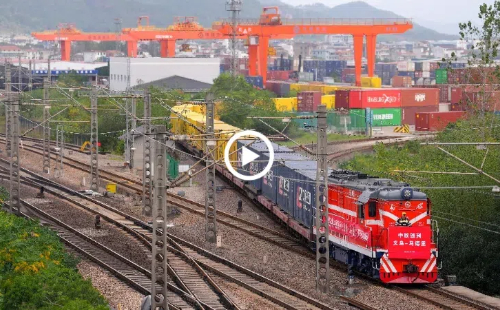Key rate cut signals easing for stability

The People's Bank of China, the nation's central bank, cut the benchmark lending rate-the one-year loan prime rate or LPR-on Dec 20, 2021. [Photo/IC]
Analysts see move as 'small step in right direction' to lower funding costs
The People's Bank of China, the nation's central bank, cut the benchmark lending rate-the one-year loan prime rate or LPR-on Monday.
In a notice, the PBOC indicated the LPR was cut by 5 basis points to 3.80 percent from 3.85 percent, the level since April 2020.
The PBOC, however, left the five-year LPR, which is a key reference for mortgage loans, unchanged at 4.65 percent.
Analysts said Monday's one-year LPR cut signals monetary easing to strengthen support for economic stability and reduction of financing costs for market entities.
Chinese monetary authorities identified the LPR as the new lending benchmark in August 2019. The one-year LPR represents the average level of lending rates offered by 18 commercial banks to their best customers. The PBOC reports the one-year and five-year LPRs on the 20th of every month.
"This (LPR cut on Monday) is a small step in the right direction," said Zhang Zhiwei, chief economist at Pinpoint Asset Management. "The government likely realized the urgency to loosen policies to offset the negative impact of the slowdown in the property market ..."
However, the "mini" rate cut itself is unlikely to have a big impact on the economy, Zhang said. "This will likely be followed by a series of other easing measures, including more cuts to the reserve requirement ratio and rate cuts as well as fiscal stimulus in 2022."
Monday's LPR cut is mainly due to the downward pressure on the economy, which reflects stronger financial support for stable growth, said Wen Bin, chief analyst at China Minsheng Bank.
Economists said that official fourth-quarter data showed moderate momentum in the world's second-largest economy, after a quick rebound in the first half.
It was mainly driven by the weak services sector hurt by strict COVID-control measures and sluggish fixed-asset investment amid a slowdown in the property sector and a relatively tight fiscal policy, they said.
The annual Central Economic Work Conference, which concluded on Dec 10, highlighted that China's economic growth faces threefold pressure from shrinking demand, supply shocks and weakening expectations.
After the meeting, China's monetary actions have been strengthened to support the real economy, including the implementation of a 50 basis points cut of most banks' reserve requirement ratio and a cut in the relending rates for agricultural and small business loans.
As China's growth may still face pressure in the first half of next year, the window for cutting the RRR and interest rates may open again, said Wen.
A research note from China International Capital Corp estimated that the one-year LPR cut will have an impact, albeit a marginal one, on the banks' net interest margins, which are equivalent to 0.7 percent of their net profits. Banks' interest margins will likely remain stable next year.
Ding Shuang, chief economist for Greater China and North Asia unit at Standard Chartered Plc in Hong Kong, said he expects the PBOC will leverage more targeted monetary policy tools like relending and rediscounting, to inject liquidity into the market in 2022.
The growth rate of total social finance is expected to remain at about 10 percent next year, higher than the predicted nominal GDP growth rate, Ding said.





 play
play